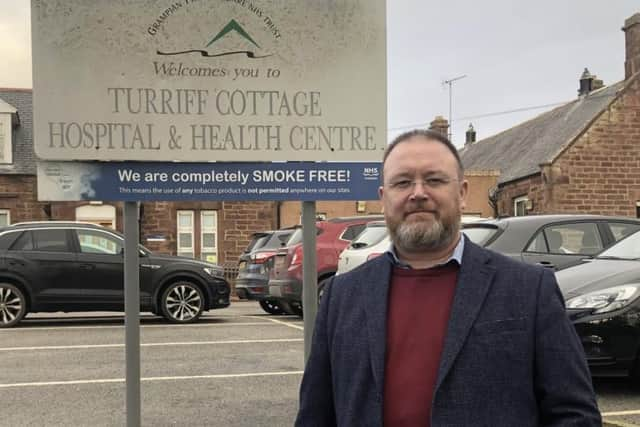David Duguid MP writes to NHS Grampian amid fears faulty concrete at north-east health facilities could risk safety of patients and staff
The Banff and Buchan MP has raised concerns after it was revealed six health facilities across his constituency could contain a potentially dangerous type of concrete that can collapse without warning.
Peterhead Health Centre, Ugie Hospital, Fraserburgh Hospital, Fraserburgh Dental Clinic, Turriff Health Centre and Cuminestown Health Centre are all at risk of crumbling from reinforced autoclaved aerated concrete (RAAC).
Advertisement
Hide AdAdvertisement
Hide AdThe flawed concrete was used to build roofs, walls and floors from the 1960s to the 1990s.


Mr Duguid has written to NHS Grampian chief executive Caroline Hiscox asking what measures are being taken to make the sites safe from potentially collapsing.
NHS Scotland has warned the material is potentially vulnerable to “catastrophic failure without warning”.
The MP said: “The prevalence of this potentially dangerous concrete in health buildings across the north-east is hugely concerning for the safety of patients and staff. To have six at risk of potentially collapsing in Banff and Buchan is deeply alarming which is why I’ve written to NHS Grampian to seek clarity on what is being done to tackle the situation.
“Patients and hardworking NHS should not be exposed to these unsafe conditions at a time when they are having to contend with other pressures on a daily basis.”
“I understand this material has been used in NHS buildings all over Scotland and I hope the Scottish Government will address this issue as a matter of urgency to give patients and staff the peace of mind that these vital facilities in our communities are safe enough to remain open.”
In his letter, Mr Duguid said: “I am writing to you following the reports that more than 250 NHS buildings across Scotland could contain dangerous Reinforced Autoclaved Aerated Concrete (RAAC) which I gather is potentially vulnerable to ‘catastrophic failure without warning’.
“This is obviously very concerning to my constituents, and I would like to ask what remedial and mitigation measures have been or will be taken to address potential safety concerns, and what progress has been made on these measures?
“I look forward to hearing from you on this urgent matter.”
Advertisement
Hide AdAdvertisement
Hide AdIt is understood that more than 250 NHS buildings in Scotland could contain the potentially dangerous type of concrete and collapse without warning.
NHS Scotland issued a Safety Advice Notice in February and completed a ‘desktop survey’ of its estate in June. Following this health officials started to undertake on-site investigations to determine whether the dangerous concrete was present.
These investigations are expected to take between six and eight months to complete.
NHS Grampian had the most buildings which could potentially contain RAAC, with 53 identified by the health board, followed by NHS Greater Glasgow and Clyde with 44 and NHS Lothian with 35.
NHS Highland identified 25 potentially affected buildings, while NHS Fife had 22. NHS Forth Valley reported eight and NHS Borders seven.
NHS Scotland warned the material was potentially vulnerable to "catastrophic failure without warning".
A Scottish government spokesperson said NHS Boards were required to regularly assess the condition of their property.
The spokesperson added: "The programme of activity planned for RAAC is in line with these requirements.
Advertisement
Hide AdAdvertisement
Hide Ad"Due to our absolute commitment to ensuring facilities are sound we have commissioned this exercise to better understand the position."
RAAC is a lightweight concrete which was used in roofs, floors and walls between the 1950s and 1990s as a cheaper alternative to the standard building materials. It has air bubbles inside and therefore has a limited lifespan.
Also known as Siporex it has been widely used in public buildings throughout the UK.
David Duguid has written to NHS Grampian chief executive Caroline Hiscox asking what measures are being taken to make the sites safe.